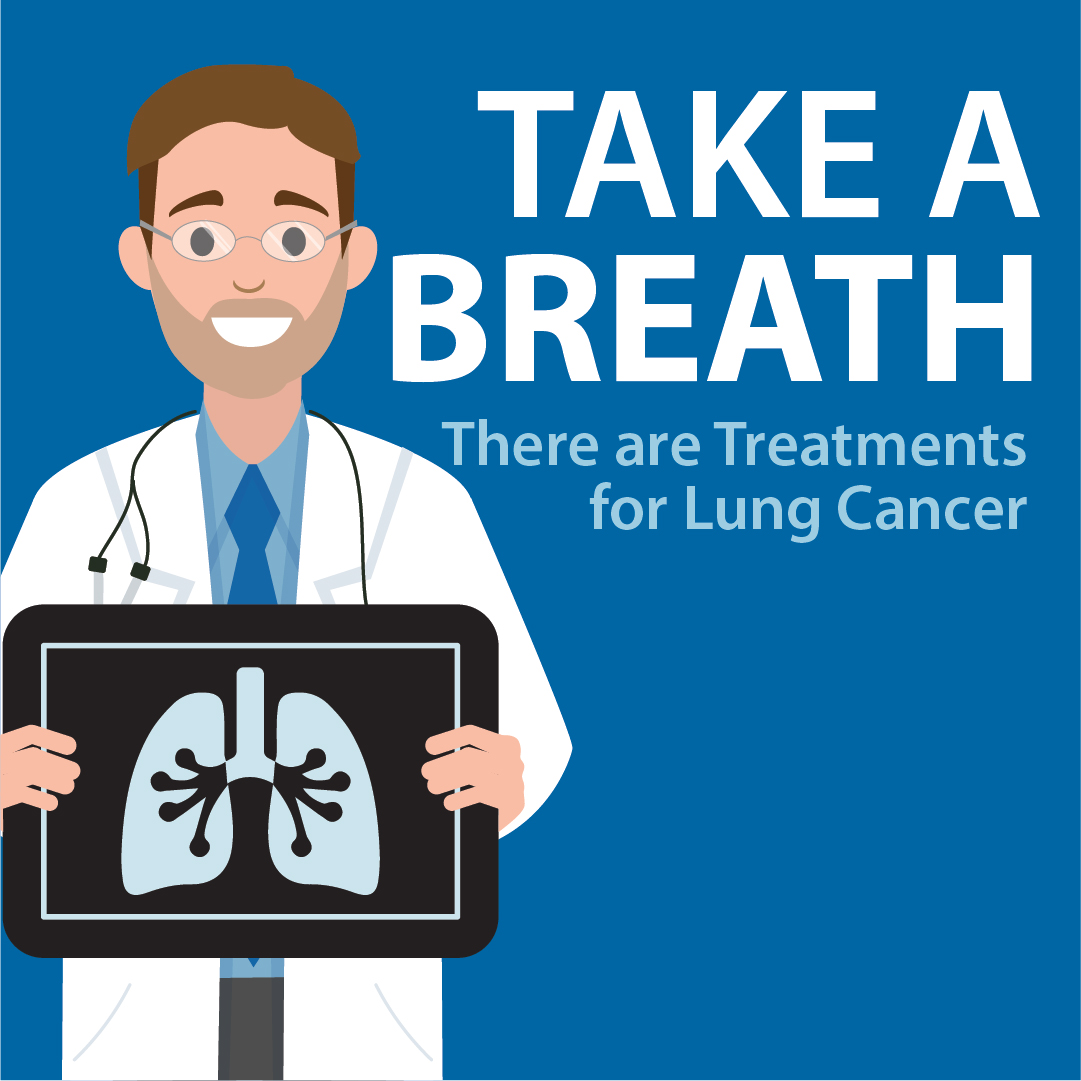As an experienced surgeon on Adena’s Cardiothoracic team, Dr. Kevin Radecki knows the devastation that comes with a lung cancer diagnosis. He values working closely with the multidisciplinary team at the Adena Cancer Center, using data from the National Comprehensive Cancer Network (NCCN), to help guide patients through their lung cancer treatment options.
Here’s What You Should Know
Lung cancer is one of the most common types of cancer with more than two million global cases each year. It also has the highest mortality rate, according to the World Health Organization (WHO). Symptoms for lung cancer can include excessive coughing that does not go away; coughing up blood; chest pain that worsens with deep breathing; hoarseness when coughing or laughing; loss of appetite; unexplained weight loss; shortness of breath; fatigue; and wheezing. Those at higher risk for lung cancer include people who are older; smokers, former smokers or people using tobacco products; those with a family history of lung cancer; people who are exposed over time to asbestos or pollutants. Patients should get regular check-ups and tell their doctor about any symptoms they may be experiencing. Early detection is the best chance for successful treatment.
The Down Lobe
It might sound unbelievable, but a lobectomy is in an operation to remove diseased tissue by extracting one of the lobes of the lung. The surgery is often performed on patients with lung cancer. The body’s lungs include five sections called lobes. The right lung has three lobes, and the left lung has two lobes. Once the affected lobe is removed, the lung’s remaining healthy tissue can work as normal. A lobectomy can be performed as an open procedure (thoracotomy) or as a minimally-invasive procedure using a surgical robot. Known as VATS (video-assisted thoracic surgery), the procedure is performed making four small incisions to allow for a camera and small, flexible surgical arms.
Could a Robotic Lobectomy Be Right for You?
A robotic lobectomy, or robotic VATS procedure, is thorascopic (using small incisions and cameras) and enables the surgeon to make precise, surgical movements to remove the lobe. The result is typically less pain and a quicker recovery time for the patient. “The latest robot has great dexterity, and is even more advanced than the previous model,” says Dr. Radecki. “By performing the lobectomy thorascopically, there is no need to open the chest, move muscles around and spread ribs apart. This means less stress on the patient, and less pain after surgery.”
Not all patients are candidates for robotic lobectomy. It is usually best if the patient’s lung cancer is classified as Stage 1 or Stage 2, and if a patient’s tumor is smaller than six centimeters in diameter. “It’s very case specific,” adds Dr Radecki. “We work closely with the patient’s oncologist to plan a treatment path where the surgery and any therapy complement each other.” That might mean using chemotherapy or radiation before surgery or after, as a means of making sure the cancer can be completely removed in surgery.
Post My Lobe
The robotic VATS procedure usually takes about two hours and 30 minutes. “Patients are about 80 percent back to their normal routine within two to three weeks after surgery,” says Dr. Radecki. “With an open incision, the recovery time for a thoracotomy is four to six weeks.”
Once the lobectomy is complete, the removed lobe, along with surrounding lymph nodes are sent to Adena Pathology for a thorough review. If cancer cells are found in the lymph nodes or the lobe’s perimeter tissue, the team will likely recommend chemotherapy or radiation therapy to minimize the risk of returning cancer cells. If the tissue and lymph nodes are free of or contain few cancer cells, the patient will likely need to come in for regular screenings every six months.
Prior to surgery, patients must take a pulmonary function test to assess their current lung strength. “There are 18 segments within the lungs,” says Dr. Radecki, “By figuring out how many segments we’re taking out, based on the patient’s pre-op breathing test, we can predict what their post-op breathing will be like after surgery.”
Be Positive, Be Proactive
If you are at risk for lung cancer due to age, family history or smoking, screenings are critical. Adena has a highly successful lung screening program, and was among the first in the nation to begin offering free lung cancer screenings to people meeting specific criteria. “Lung cancer screening can increase your survival chances by 20 percent,” says Dr. Radecki. Detecting cancer early is the best means for successful treatment. With a successful VATS lobectomy, patients can return to daily activities and quality of life relatively quickly, “and that’s really what we want for our patients.” says Dr. Radecki.
